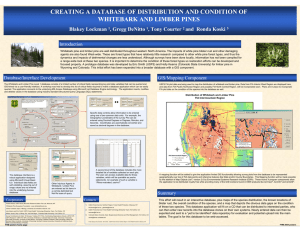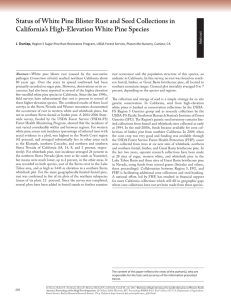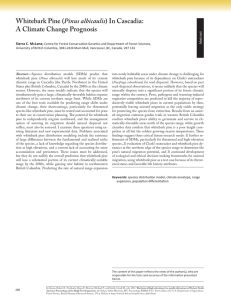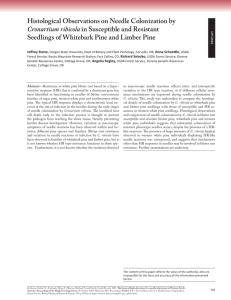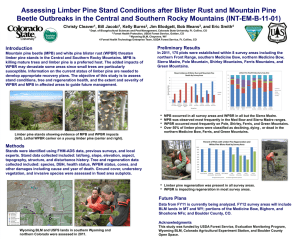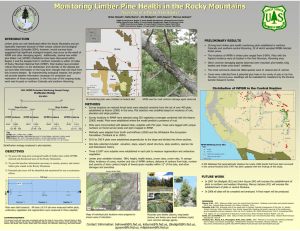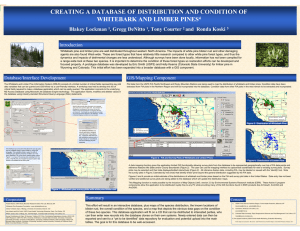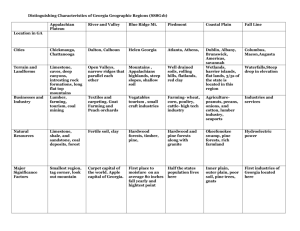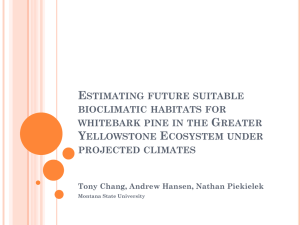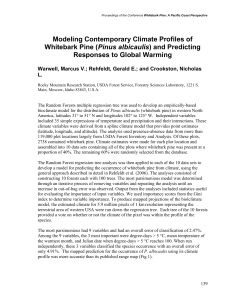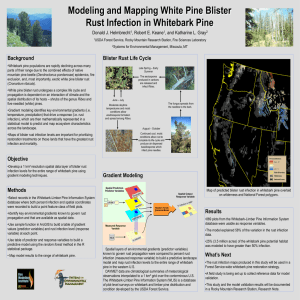Restoring Whitebark and Limberpine Ecosystem in the NCDE
advertisement
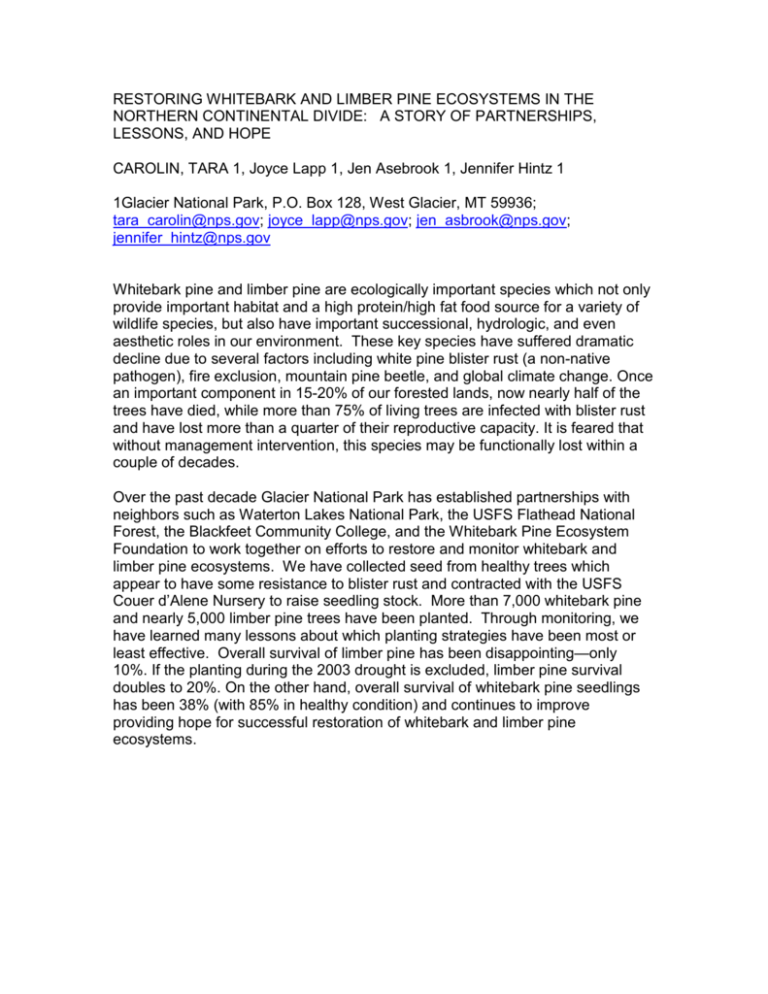
RESTORING WHITEBARK AND LIMBER PINE ECOSYSTEMS IN THE NORTHERN CONTINENTAL DIVIDE: A STORY OF PARTNERSHIPS, LESSONS, AND HOPE CAROLIN, TARA 1, Joyce Lapp 1, Jen Asebrook 1, Jennifer Hintz 1 1Glacier National Park, P.O. Box 128, West Glacier, MT 59936; tara_carolin@nps.gov; joyce_lapp@nps.gov; jen_asbrook@nps.gov; jennifer_hintz@nps.gov Whitebark pine and limber pine are ecologically important species which not only provide important habitat and a high protein/high fat food source for a variety of wildlife species, but also have important successional, hydrologic, and even aesthetic roles in our environment. These key species have suffered dramatic decline due to several factors including white pine blister rust (a non-native pathogen), fire exclusion, mountain pine beetle, and global climate change. Once an important component in 15-20% of our forested lands, now nearly half of the trees have died, while more than 75% of living trees are infected with blister rust and have lost more than a quarter of their reproductive capacity. It is feared that without management intervention, this species may be functionally lost within a couple of decades. Over the past decade Glacier National Park has established partnerships with neighbors such as Waterton Lakes National Park, the USFS Flathead National Forest, the Blackfeet Community College, and the Whitebark Pine Ecosystem Foundation to work together on efforts to restore and monitor whitebark and limber pine ecosystems. We have collected seed from healthy trees which appear to have some resistance to blister rust and contracted with the USFS Couer d’Alene Nursery to raise seedling stock. More than 7,000 whitebark pine and nearly 5,000 limber pine trees have been planted. Through monitoring, we have learned many lessons about which planting strategies have been most or least effective. Overall survival of limber pine has been disappointing—only 10%. If the planting during the 2003 drought is excluded, limber pine survival doubles to 20%. On the other hand, overall survival of whitebark pine seedlings has been 38% (with 85% in healthy condition) and continues to improve providing hope for successful restoration of whitebark and limber pine ecosystems.

